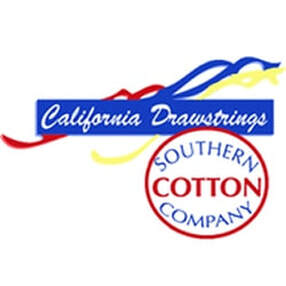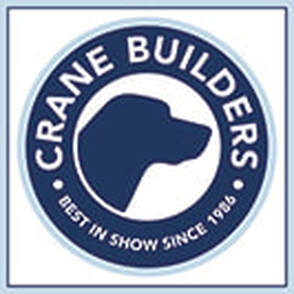The Depot Area In this installment of Pat Murphy's book-in-progress about historic Bay St. Louis, you're invited to step into the past for a stroll around the Depot District! - by Pat Murphy
I remember the train being packed with people (seemingly beyond capacity) and EVERYBODY was drunk, many even disorderly. I remember people getting sick and everybody was really loud. The ride home from Mardi Gras that year was a memorable experience! The Depot Area Businesses From Washington Street and Hancock Street to Necaise Avenue, Bookter, and Blaize Avenue, there were small businesses scattered all about what I consider the depot area. The Gold Medal Bakery was located at the corner of Washington and Hancock with Ladner’s Grocery and Monti Carver Plumbing Company on the opposite corners. Driving down Hancock Street next door to Monti Carver Plumbing was Lloyd Ladner’s Seafood Market (generally known for the coldest beer in town) and then Buford Parker’s Grocery Store. Across Hancock from Parker’s Grocery was the Globe Laundry run by Mr. Ted Robin. On the opposite side of Sycamore Street, Buford Parker had a gas station and mechanic shop on Hancock Street. The Holland family ran a grocery store and gas station at the corner of Washington and Third Street. There was another gas station on the opposite corner across Third Street where Boudin’s Grocery once stood. Superior Supply was a lumber and building supply company run by Erin Heitzmann’s dad, Mr. Roger Heitzmann. This lumber yard was located on Third Street directly across Third Street from the Webb School. At one time Emile Piazza (later to be Hancock County Coroner) ran a funeral home in an old home at the corner of Ballentine and Third Street. The Strong Family ran a seafood market further down Third Street just past the corner of Ballentine Street. Luxich’s Department Store was located on the corner of Sycamore and Third Street. On the opposite corner (where the church parking lot is now located) Wilmer’s Market, a grocery store, stood. This grocery store was run by Mr. Wilmer Thibaud, a very kind and well thought of man in the community. At one time, earlier in the century, Betz Bakery was located across Sycamore, on the property now owned by Carter Church. Mr. Betz, who ran this bakery was the great, great grandfather of Lil’ Ray Kidd, the founder of Lil’ Rays Seafood Restaurant. Buster Heitzmann told me that this intersection where Sycamore crosses Blaize Avenue as it becomes Third Street was known at one time as “Devil’s Elbow”. Heading back towards the depot on Blaize Avenue, The Bay Ice House was on the right just after the Scafide home. It is now the Little Theatre Playhouse. Across the street, Pitalo’s grocery store was located. Just past the icehouse on the corner of Keller Ave was Fahey Drug Store. The Blaize Avenue strip center across from the depot housed a lot of different businesses over the years. Probably the longest running business was Beningo’s Bar (now Little Joe’s). This was owned by Norman and brother Sam Beningo.When I was a child this commercial strip housed two grocery stores just down from each other, but earlier there had been as many as three. Meyers Cash Grocery was down on the Kellar Avenue end and there was a vacant lot on the corner where the old Gilmore Hotel had once stood. The other grocery was C & S Grocery (Carter & Scafide) which was located next door to what is now Little Joe’s Restaurant. Mr. Charlie Flink also operated a grocery store in the early 1940s in this strip. There was a McDonald’s Furniture store, Casanova’s Jewelry and even, briefly, a small movie theatre. By the 1960s, Mr. Sheldon Seuzeneau had relocated The Mary Carter Paint Store back in this strip and George “Pops” Seuzeneau ran a cocktail lounge named The Chateau Seu down on the Bookter Street end. Earlier there was The L&N Bar in this location. A lot of people aren’t aware of it, but Hubbard’s Waveland Hardware actually started business in this depot district strip center in 1952. While I have been unable to establish exactly when this strip building was constructed, I believe that it dates back to the early nineteen twenties. Engman’s Department Store was located around the corner on Bookter Street between Hancock and Blaize Avenue. The house that still stands on the corner of Hancock and Bookter was the Engman home. Engman’s Store dated back to around 1900. Mr. Eddie Engman was an old man in my childhood, but was still running the store into the 1960s. This business was located in the middle of the block, several houses down from Tony Beningo’s Barber Shop (the current site of J.P. Compretta and Brian Alexander’s law office) and across the street from the St Stanislaus back school (Rip’s University, as we called it). Down at what is known as Five Corners, where Union curves into Blaize Avenue at the intersection of Hancock and Toulme, Mr. Emmet Demoran had his television and appliance store. Next door to Mr. Demoran’s was Al Kingston’s Barber Shop and Sporting Goods store (Rickey’s is now located in this building). 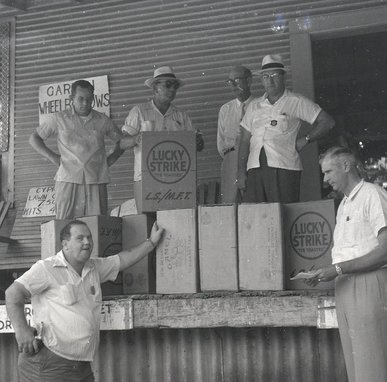 The loading dock at W.A. McDonald & sons The loading dock at W.A. McDonald & sons One business that kind of stood on its own in this area was W.A. McDonald & Sons. It stands on the corner of South Toulme and Easterbrook Street and has been operated out of this location since around 1934. This business was founded in 1904 by W.A. McDonald and then run by his sons, C.C. McDonald, Sr. and younger brother, John McDonald. The business is still run by the daughters of Mr. Jim McDonald, C.C., Sr.’s youngest son. The first location of WA McDonald was a warehouse on the railroad tracks at Bookter Street. The business started primarily selling feed and farm supplies. Then the business moved to the building at the corner of Second and Main. Originally the building was known as The Red Hot and later would house Perry’s and then Jerome’s Men’s Department. This great old building is now the location of The Social Chair. Every time that I walk into the current W.A. McDonald & Sons building on South Toulme at Easterbrook, the distinctive smell of wood and lumber carries me right back to my early childhood. This wonderful scent has never changed and my senses delight in experiencing this whenever I walk in the front door of W.A. McDonald’s. Labat’s Cleaners was located on Easterbrook Street around the corner from W.A. McDonald and Sons in the block between Toulme and Necaise Avenue. Buster Heitzmann told me that at one time in the 1920s, the grandfather of Joe and Rudy Labat (Papa Joe Labat) ran an alteration and pressing business in a house at 126 Main Street, which would later be the location of my grandfather Stevenson’s business. Papa Joe Labat was a musician, as was his son Sumner ( Mr. Joe and Rudy's dad), and he played in The Promote Hall Jazz Band. When I was a young boy I remember going into the old Labat’s Cleaners before it was rebuilt. Sumner Labat was quite elderly by this time, but he would always be sitting at an old manual sewing machine doing alterations on the right as you walked in the door. Sumner Labat had a very popular local Dixieland dance band in the 1940s and 50s. Sumner’s band featured another prominent local musician, Harry Fairconnetue, playing the trumpet. Cue Oil Company was located at the corner of Necaise Avenue and Union Street, directly across the street from the St. Stanislaus football stadium. This company was owned by Dick Cue, a man who had his hands in a lot of different things. Cue Oil Company was a Shell Oil distributor and bulk storage facility. My friend Ronnie Genin’s father, Mr. Alvin Genin, Sr. worked for Dick Cue and managed Cue Oil Company. Back in the 1940s and early 1950s, Dick Cue was involved in county politics and the slot machine business. I remember that upstairs in the building there were a lot of old “one armed bandits” stored in one area. This was in the days of the “black market tax,” when most illegal enterprises were legal as long as the “black market tax” was paid to the right people. Most of the state of Mississippi was run in this manner for a period of time. The Black Market Tax period ended around 1965, when state laws were enacted establishing a state run Alcoholic Beverage Commission. At any rate, there were massive amounts of Shell motor oil, grease, lubricants, gasoline and diesel fuel stored at the Cue Oil facility. There were three or four gasoline and diesel fuel storage tanks each, with a several thousand gallon capacity behind the facility where the delivery trucks were kept. Because I was friends with Mr. Alvin Genin’s son, Ronnie, I spent a lot of time back at this facility. One afternoon in about 1971, the old building caught fire somehow and burned to the ground. This was probably the biggest fire that Bay St. Louis had seen since the great fire of 1907. Miraculously, the fire department was able to keep the gasoline storage tanks cooled by diligently spraying them with the water hoses and none exploded. Had the gas storage tanks exploded, the whole block, including the 100 Men Hall. would have been leveled!! I vividly remember racing back there as soon as I heard that it was on fire. There were fifty-five gallon drums of oil and grease exploding and shooting off in the air like rockets. This was an amazing spectacle to witness. The One Hundred Men Hall is still located on Union Street, about four houses behind where Cue Oil Company once stood. As a young man growing up in Bay St. Louis, I always had the music bug in my bones. I tell people that because of my love of music as a youngster, there was no way that I couldn’t have known about the One Hundred Men Hall. Isaak J. “Guitar Bo” Darensbourg has been a lifelong friend since I was five years old and he used to clean Ms Susie Weston’s yard two houses over. Bo played music even then and I remember him talking about playing at the One Hundred Men Hall! The One Hundred Members Debating Benevolent Association built the One Hundred Men Hall in 1924, but the black organization was founded in the 1890s. In the 1940s and 50s, and well into the 1960s, most all of the great rhythm and blues artists of the era performed at the One Hundred Men Hall. This venue was one of the established stops on the legendary “Chitlin’ Circuit”. From Guitar Slim, Professor Longhair and Fats Domino to Earl King, Etta James and Solomon Burke, they all performed at this legendary venue. Hollywood Comes to the Depot District In the fall of 1965, the big buzz in Bay St. Louis was that Hollywood was coming to town. Director Sydney Pollack would be arriving in Bay St. Louis along with Natalie Wood, Robert Redford, Charles Bronson, Kate Reid, Mary Badham and John Provost to film a movie. An adaptation of the Tennessee Williams’ one-act play entitled This Property Is Condemned, the movie was filmed entirely in Bay St. Louis’ depot area except the scenes which took place in New Orleans’ French Quarter. The central theme was all centered around the old Scafide home on Blaize Avenue and the area around the Bay St. Louis train depot. The screenplay was written by future great Francis Ford Coppola (of The Godfather fame). A number of locals were cast in walk-on rolls, including Ms. Elsie Sporl (Mike Willumitis’ aunt), who was filmed walking out of a grocery store in one scene. The whole area of town was transformed into 1920s rural Mississippi, as a fictional railroad town of Dodson, Mississippi. The church at the corner of Sycamore and Third Street was transformed on the exterior to a small town movie theatre. I remember being at St. Stanislaus stadium with the marching band rehearsing for a half-time show with helicopters flying all around when a representative of the director showed up. It seems that they were trying to film a scene right around the corner on the tracks and the camera microphones were picking up the marching band rehearsing. We were allowed to go on the set and watch the scene being filmed (the scene that begins and ends the movie), if our band director would call off rehearsal for the rest of the afternoon. It was all quite exciting for small town kids. Natalie Wood was very warm and open while she was here and graciously allowed people to have photographs taken with her (including some of the good sisters from Saint Joseph Academy). John Provost who had been the little boy on the TV show Lassie was about sixteen and had long hair in a “beatle” type hairstyle. He was quite the heartthrob for all the high school girls. The film was released in August of 1966 to moderate reviews and is still shown occasionally on some of the movie channels. In retrospect, this movie was really pretty good. I still crack up every time I view the scene in the movie when Ms. Elsie Sporl, who passed away around 1970, walks out of the grocery store in the movie! More of the Neighborhood The concrete block building at the corner of Necaise and Bookter now houses the Bay Artists Co-op, but for a number of years this building was the National Guard Armory. By my early teens, the armory was relocated to a site out on Longfellow Drive. The County Extension Service was located in a big building on the north side of the old armory building. This was the headquarters for the county agent, the home economist, the 4H program, as well as the welfare and food stamp office. This building stood directly across the street from the St. Stanislaus Football Stadium, which at the time was entirely enclosed by an eight-foot concrete block wall. On the Bookter Street side of the stadium, there was at least one (maybe two) caretakers' quarters along with the stadium locker rooms built onto the block wall. At the intersection of Bookter and Necaise, where the CSX Maintainence building stands, was a Standard Oil Bulk Plant. Like Cue Oil Co. but smaller, it was a bulk gasoline and storage facility for Standard Oil. After the fire, Cue Oil moved into this smaller facility for several years before Mr. Alvin Genin’s death, then eventually closing. No discussion of the depot area would be complete without mention of Mr. Joe Loiacano. Mr. Joe was a real American entrepreneur. While he was predominately involved in the grocery business, he was also not afraid to try his hand in anything that might provide income for his family. The A&J food store started started in 1934 when Joe Loaicano purchased the business from his father Anthony Loiacano.
Originally the grocery was located at the corner of St. John and Necaise but shortly after moved to the corner of Easterbrook and Necaise. By the late 1940s, Mr. Joe had moved his grocery to 220 Main Street and eventually to the building at the corner of Main Street and St. Francis (now Blue Rose Antiques). He also constructed a strip center on Necaise across from where his grocery had been located. For a period of time Mrs. Loiacano (nicknamed “Jim”) ran a bar called Jim’s in this center and they also ran a sundry shop on the other end of the center. Another thing that Joe Loicano owned in this part of town was a big tin building that was used as a warehouse for Regal Beer. This was across the street from the Loiacano home on the corner of Necaise and St. John Street. Mr. Joe constructed this home and was going to open a funeral home around 1952. The gentleman who was supposed to operate and manage the funeral home died shortly before completion, so the business never opened and the building became the Loicano family home instead. Now the Loiacano home is the location of Edmond Fahey Funeral Home. The Depot District today remains a vibrant part of the Bay St. Louis business and tourism scene with restaurants, bars, parks, galleries and interior design businesses among other enterprises. Comments are closed.
|
Categories
All
Archives
May 2024
|
Shoofly Magazine Partners
Our Shoofly Partners are local businesses and organizations who share our mission to enrich community life in Bay St. Louis, Waveland, Diamondhead and Pass Christian. These are limited in number to maximize visibility. Email us now to become a Shoofly Partner!

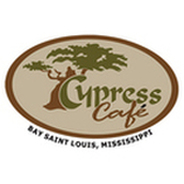
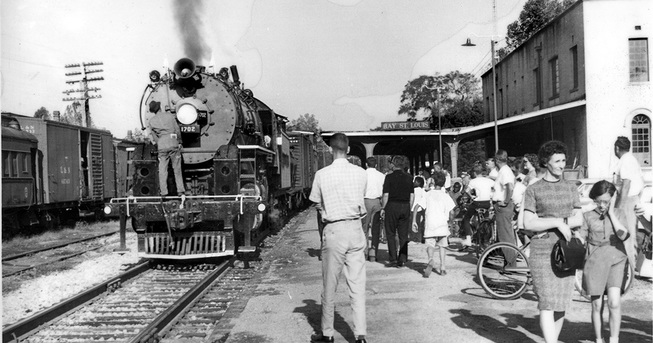
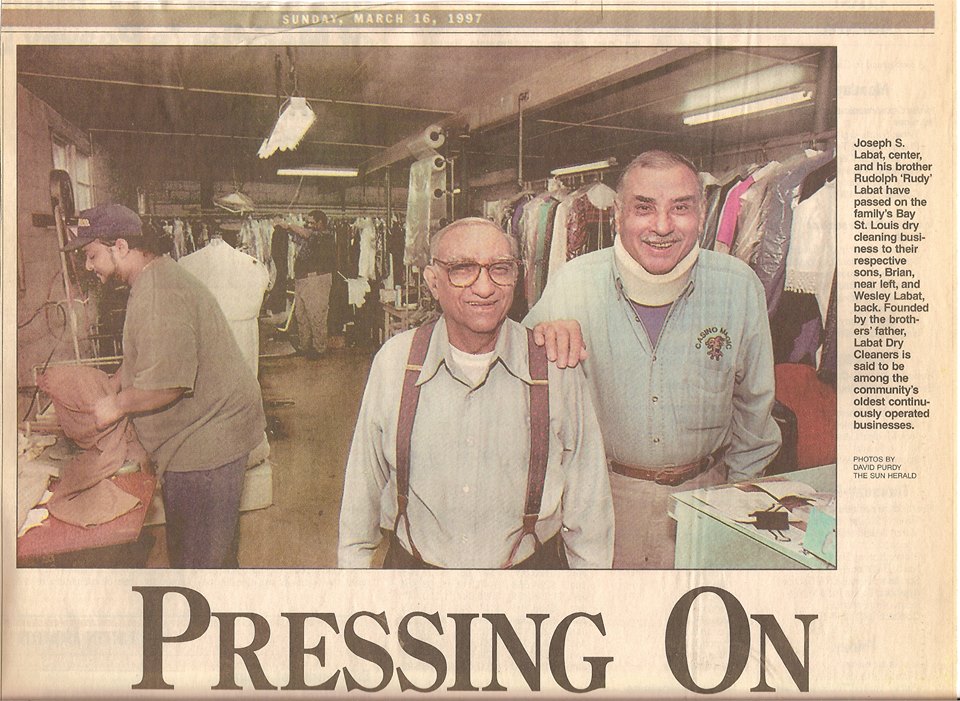
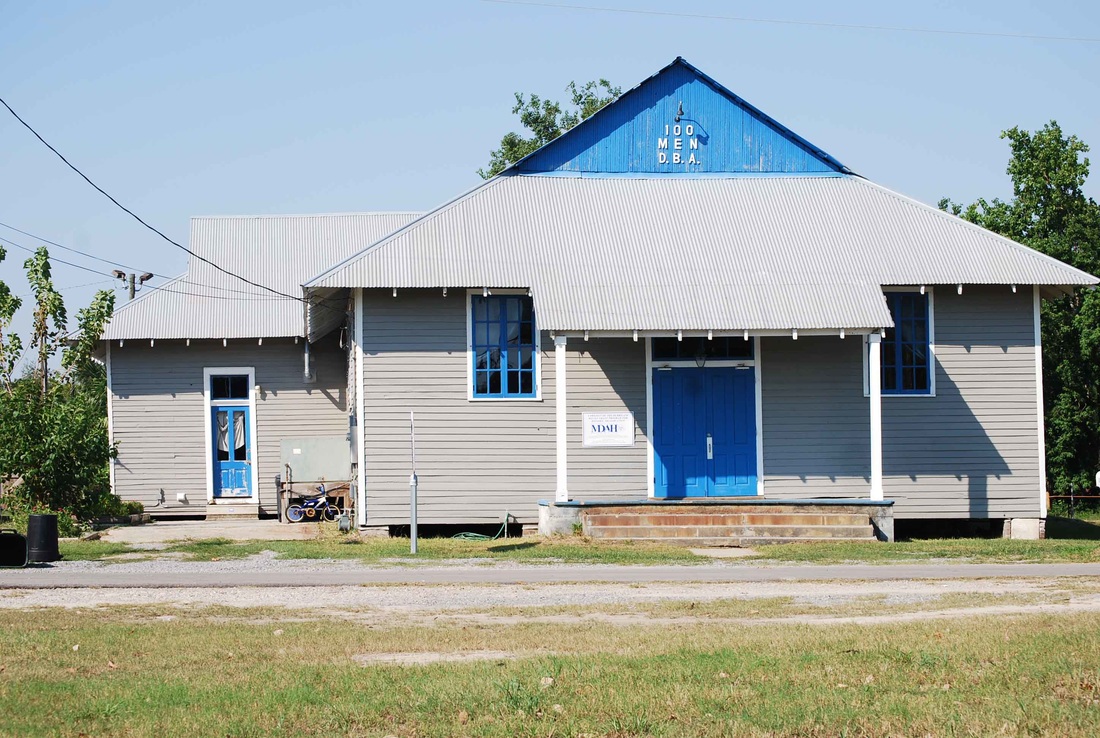
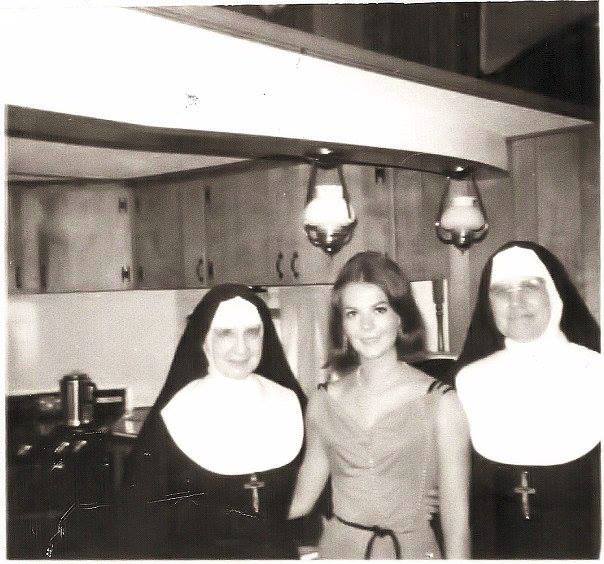
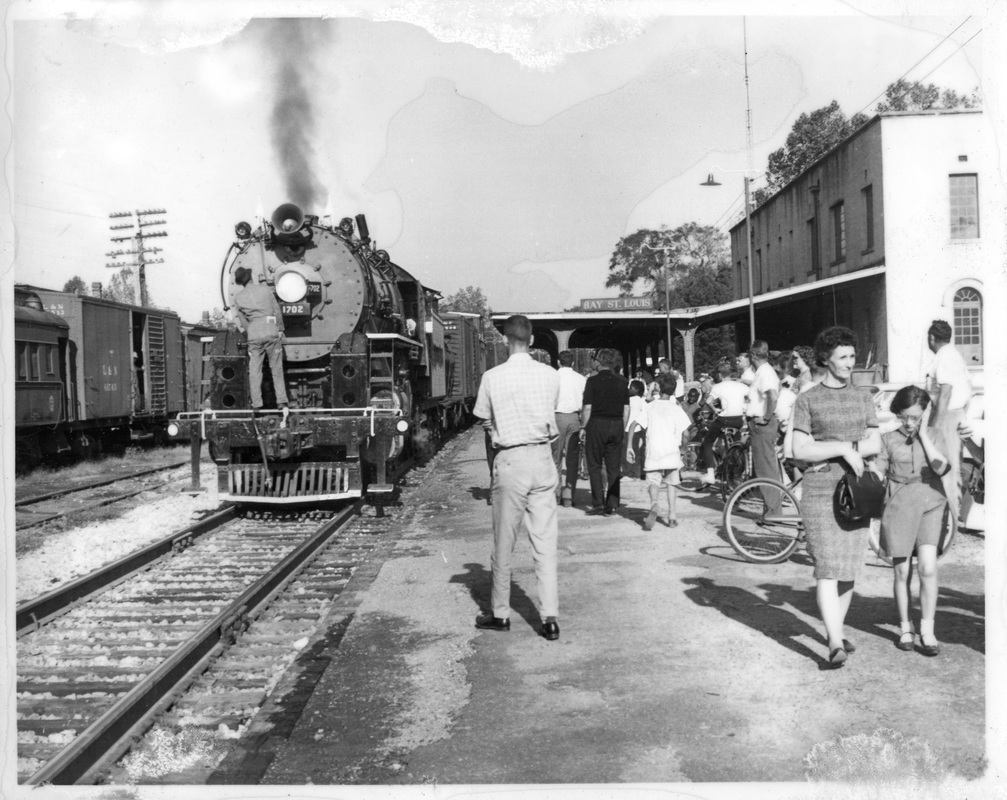
















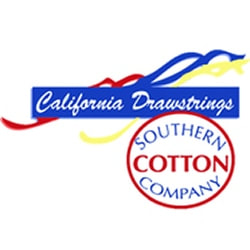







 RSS Feed
RSS Feed








